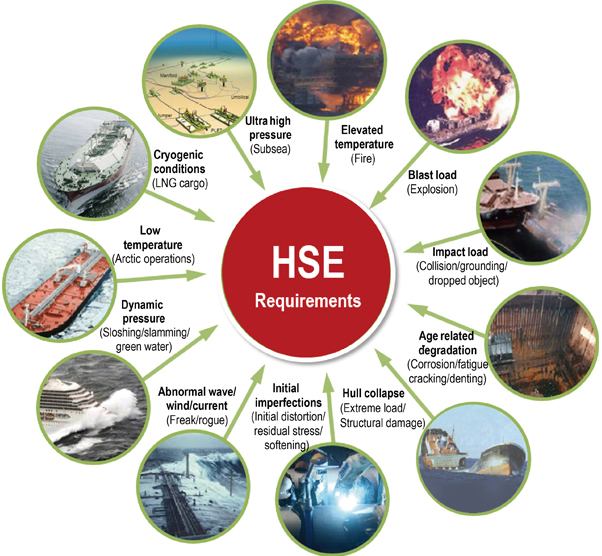-

Ships and offshore platforms usually operate under normal conditions while in service, but can face extreme and even accidental conditions, as shown in Figure 1. They are subject to various action effects resulting from these extreme and accidental conditions. The sources of such actions and action effects include(without consideration of any specific order): welding induced high temperature causing initial imperfections (e.g., initial distortions, residual stress or softening in the heat-affected zones of welded aluminium structures); abnormal waves/winds/currents; dynamic pressure loads arising from sloshing, slamming or green water; low temperature in Arctic operations; cryogenic conditions resulting from liquefied natural gas cargo; ultra-high pressure in ultra-deep waters; elevated temperature due to fire; blast loads due to explosion; impact loads associated with collision, grounding or dropped objects; age-related degradation such as corrosion, fatigue cracking and local denting damage; and hull girder collapse or sinking. Such events sometimes result in catastrophic consequences that lead to casualties, property damage, and pollution. Successful design and engineering should meet not only functional requirements but also health, safety, environment and ergonomics (HSE&E) requirements. Functional requirements represent operability under normal conditions, and HSE&E requirements address safe performance and integrity in extreme and accidental conditions.